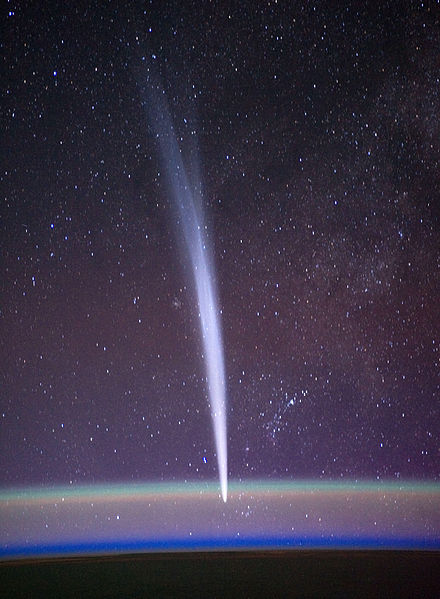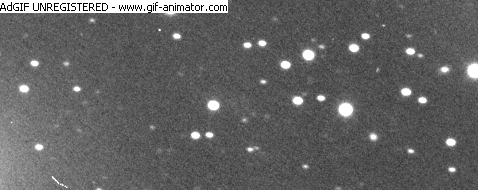2013 looks like being the year of the comet

 |
| Comet Lovejoy, taken by astronaut Dan Burbankfrom the ISS |
The astronomy world has been buzzing since it was announced on 24 September – C/2012 S1 is a new comet that could be lighting up our skies like none in living history by November 2013. It’s been named Comet ISON after the telescope research network used to discover it – the International Science Optical Network, using its 16″ telescope in Russia.
It has since been confirmed, using one of the scopes from the public subscription-based telescope network iTelescope.
With a trajectory taking it very close to the Sun, people are predicting that it could be bright enough to be visible in daylight, like Venus. Ernesto Guido, Giovanni Sostero & Nick Howes advised on the blog for the Associazione Fruiulana di Astronomia e Meteorologia that it will pass within 0.012AU of the Sun – with one AU being the distance of Earth from the Sun – at the end of November and about 0.4AU from Earth in early January 2014. That’s about 1.8 million kilometres from the Sun.
They predict it will become a naked-eye object from early November, and peak in negative magnitudes between 25 November and 3 December, with the brightest a whopping -10.6. Given the visual flop that was the last Haley’s Comet visit, they urge caution with these calculations. But calculations by others appear to confirm that it will likely be very bright.
In 2007, Comet McNaught (named after its discoverer Aussie Rob McNaught) peaked at -5.5.
A quick backgrounder on apparent magnitudes: this scale was formed in the Northern Hemisphere by the Greek astronomer Hipparchus some 2000 years ago. He thought that the star Vega was the brightest there was, and assigned it a magnitude of zero. There’s a lot of history and jiggery-pokery behind it (covered well on Wikipedia), but in a logarithmic scale, each five steps in magnitude equates to 100 times in brightness. So a Mag 5 star is 1% the brightness of Vega.
But then people travelled to the Southern Hemisphere and discovered the much brighter star Sirius. Let’s not forget the planets and the Moon. So instead of tossing the 2000 year old busted system out, they just took it into the negatives. So Sirius is -1, Venus at its maximum (which we are approaching now) is -5, the full Moon -13 and the Sun -27. The ISS is maximum -6 and is regularly (in this area anyway) -3.3.
Of course, C/2012 S1 could actually disintegrate if it gets too close to the Sun. Comet Lovejoy C/2011 W3 almost suffered such a fate, actually cutting through the Sun’s corona on 16 December 2011. But somehow it emerged intact and put on a magnificent display of about -4 for us in the Southern Hemisphere – if we were prepared to get up early in the mornings.
There’ll be another comet in our skies before then – C/2011 L4 (PANSTARRS) will swing by in March and is predicted to have a magnitude in between 0 and 1.
 Follow
Follow